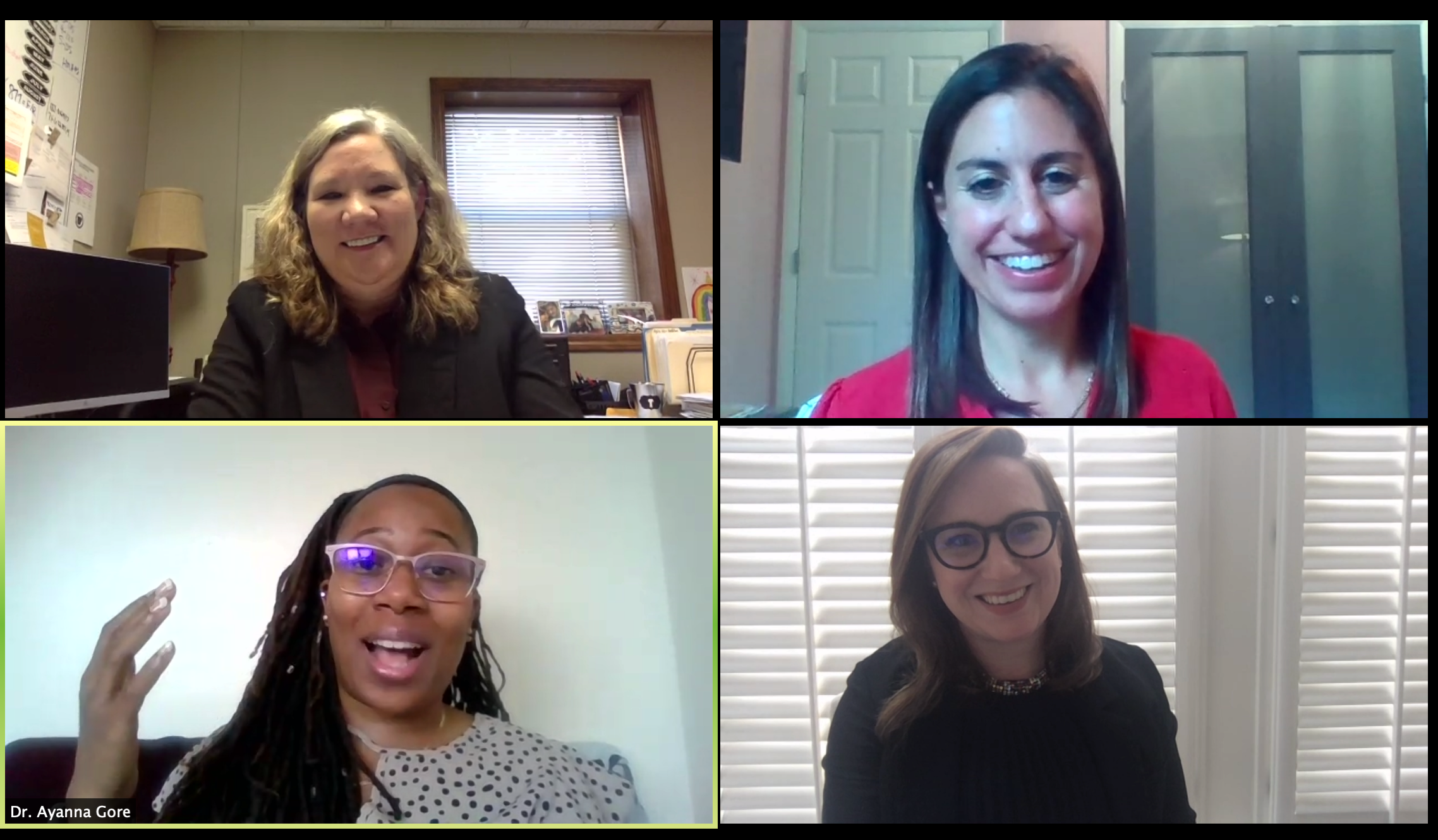Promise in the Time of Quarantine: Exploring How Schools Responded to COVID-19
Written by Kristen Titus, Executive Director, Cognizant U.S. Foundation
From ever evolving school structures to new work environments, change has become the only constant in our daily lives. And as a parent, the shifting education landscape and new ways we work often collide in my own living room.
At the Cognizant U.S. Foundation, we’ve long invested in preparing workers and students for success in today’s digital economy.

And as COVID-19 has forced both education and workforce systems to change overnight, we revisit the question of how best to serve our communities in today’s environment.
That’s why this spring, in the wake of school closures and the introduction of online and hybrid learning models, the Foundation set out to better understand the impacts of virtual learning on all populations and develop best practices for educators everywhere.
Clockwise from top left: Christie Toland, Assistant Superintendent, Gentry Public Schools; Samantha Messer, Senior Director, Special Education and ELL, Uncommon Schools; Kristen Titus, Executive Director, Cognizant U.S. Foundation; Dr. Ayanna Gore, Executive Director/Principal, Summit Sierra High School.
In September, Teach for America and Bellwether Education Partners released Promise in the Time of Quarantine: Exploring Schools’ Responses to COVID-19, new research that explores how K-12 education in the United States evolved to meet the needs of students and educators alike.
As the research puts it, “COVID-19 has altered education as we know it, and no one school has found the perfect approach to distance learning.” The report goes on to highlight common challenges and lessons learned from school leaders across the country—distilling them into a set of core promising practices. As part of the report’s launch, I had the honor of moderating a discussion with school leaders from Washington, Arkansas, and New York and New Jersey—the true heroes of today’s new reality. Here’s what we learned:
Equity has always been central to education—today it takes on a whole new meaning. From access to digital tools to reaching homeless students to working with students with different abilities, each educator expressed concern over the looming gulf in the student learning experience. As one school leader shared, “We are trying to disrupt systems.” To mitigate effects from this gulf, our school leaders are focused on “getting it right” by fostering community and partnerships that ensure all students are seen and heard.
Flexibility is paramount to success. Educators are focused on ensuring that students can unlock their own leadership and critical thinking. As a result, they understand different students might work at different times of the day and have different ability levels. Teachers are focused on remaining flexible with remote and hybrid learning styles. As one educator shared, “It’s not about if [students] made it through every single chapter, but rather the depth they reached in that work.”
Despite the challenges, there have been many positives from navigating this new territory. There are students who are engaging far more than when they were confined to brick and mortar, students with access to technology and devices for the first time, and students who have blossomed in a new, flexible learning environment. Unsurprisingly, today’s school leaders are learning from this experience and looking for ways to translate the benefits of remote learning back into a building-based environment.
Above all, we reflected on the tremendous effort, creativity and bravery that today’s educators have showcased. I encourage you to take a moment and share a note of gratitude—even if it’s brief—with the educators in your life. And, if you’d like to learn more about this research, check out Promise in a Time of Quarantine.
We also know that learning doesn’t just occur at school—students of all ages experience hands-on, innovative learning at after school programs, museums, libraries, science centers and other community-based locations. Similar to the classroom experience, these experiences have undergone big shifts in a remote environment.
In addition to our research into how the classroom experience has changed, we also recently teamed up with the Lawrence Hall of Science at the University of California, Berkeley, to look at how outside-the-classroom learning has been impacted by changes due to COVID-19. You can read this research report here, Supporting Making-Centered Experiences in Distance-Learning Contexts.
Learn more about the Foundation and our work—and connect with us on Twitter and LinkedIn.